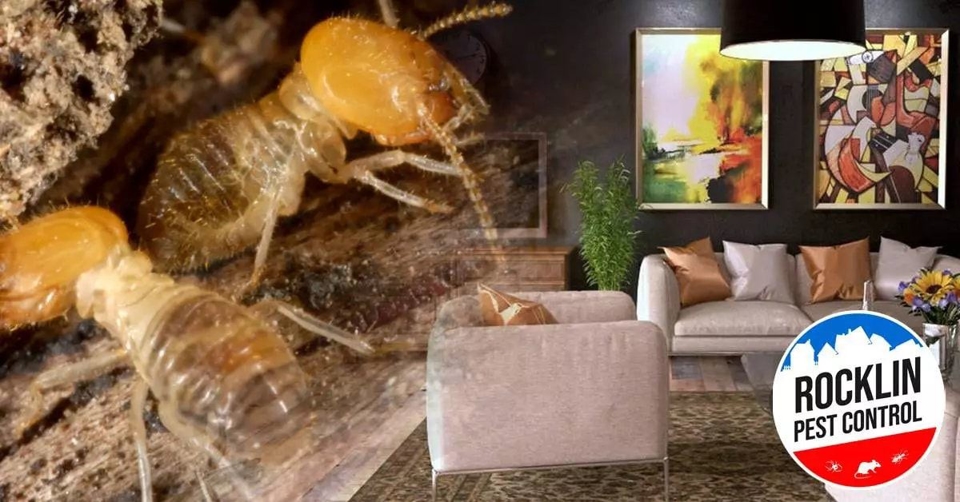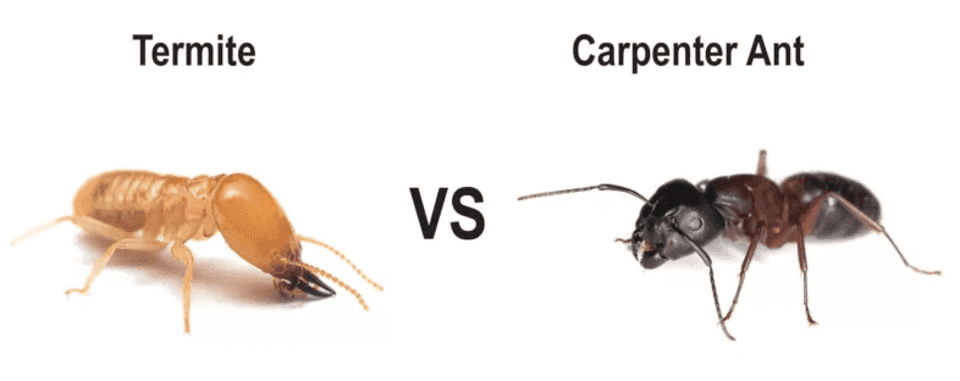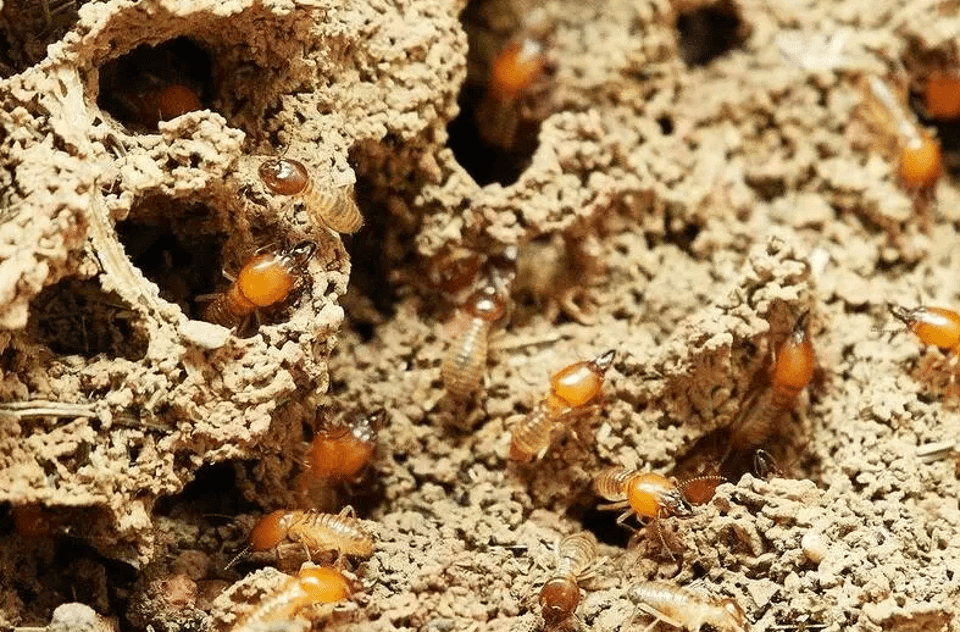One of the most dreaded pests in America is the Termite. While sometimes misunderstood and considered to be a cockroach, termites are actually quite different from those pests that we often find in our homes. Instead of being small, flying creatures, termites are big insects that live underground and feed off of the wood in your home.
Termites are particularly notorious for destroying California homes and businesses, causing millions of dollars in damage each year. According to the National Pest Management Association (NPMA), termites inflict more than $5 billion in property damage annually.
Now, let’s continue…
Termite damage can present in various ways, including inexplicable wood damage, damaged floors, drooping ceilings, and more. While termite damage is generally buried within a home’s structure, extremely devastating infestations will begin to reveal evident indicators, especially after some time has passed.
What Are the Signs of Extensive Termite Damage (That I Should Look Out For)?
Termites are one of the most common pests in the United States. If you suspect that you have a termite problem, it’s important to take care of it as soon as possible.
Most people are aware of the signs of termites in an older home, or one that has been vacant for a long period of time, but what about in a newer home?
How does a new home get termites? When you purchase a new home and the previous home had an infestation, you may also have an infestation.
Since there are no signs of damage, you may not even think to look for termites. Termites survive by eating wood, and they can eat through just about anything. They can live in just about anything in your home, including your walls, your floor, your furniture, your countertops, and even the handle on your cup. Termites can be a problem in any area of the United States (not just in Northern California).
Mud Tubes
Termite damage is a tricky situation that can cost you a lot, especially if you don’t act quickly. The first sign of an invasion is the appearance of mud tubes. This isn’t that rare and can be found in almost every home. However, if you find a lot of them, and the tubes are made of mud that seems like it is fresh, then that is a clear indication that termites are already eating your house.
Termites form mud tubes to move and avoid light on the inside walls of your home’s foundation, but they can also be observed on external walls and home decks. These passageways might be found behind leaves and detritus, which is dark and wet.
While moving back and forth to acquire their food, they are protected by these tunnels from being completely exposed to the outer world. If you notice muck creeping around inside your home, there are good chance pests have already established a hive nearby.
Hollowed or Damaged Wood
Wood damage can be seen below and behind surfaces like walls, floors, and more. This can be caused by termites chewing through a wood searching for cellulose, leaving behind long grooves.
Over time, these grooves weaken the wood and create structural damage. As a result, hollowed wood usually has a honeycomb interior and an empty sound.
More often than not, termites leave a telltale trail composed of soil and wood. This is usually found on your walls near your floorboards. If you see that, then you need to look for a professional pest control company that can repair the damage.
Swarming activity
On the interior of your home, it’s significantly less probable that you’ll notice those same adult stage termites in flight. Instead, you most likely have a house infestation if you see a sudden swarm flying or crawling on the inside walls of your home or if you locate a pile of abandoned long white wings.
Additionally, termite wings can be discovered around closed windows, doors, and other entry places to the house. This happens when termites swarm out of their nests to mate and create a new colony.
Termites twist their wings off as they land since they will never use them again. Termite wings are all the same size, whereas ants have one bigger (front) and one smaller (back) set of wings (rear).
Sounds
You will also probably hear strange noises coming from inside your walls. This is the sound of termites eating your house. You might not be able to hear it, but if you can, it is a clear sign that the damage is extensive.
Subterranean termites can be heard if you have good hearing. Insects warn each other of danger by beating their heads and shaking their bodies, in addition to eating wood.
To the human ear, it sounds like clicking. But, as termites travel through your walls, you may hear what sounds like paper rustling.
Repairing Termite Damage
After a termite infestation has been eradicated from your property, you must address the damage they have created. The damage might significantly influence the house’s structural stability, so it’s better to fix it as soon as possible.
If your property is at risk of collapsing, termite damage restoration can be as easy as replacing a few beams or adding support structure to significant engineering work. Additionally, you can use wood hardeners, wood fillers, and wood replacement for repairing damages that termites caused.
Cost of Termite Damage Repair in California
Termite damage restoration costs vary based on the severity of the infestation and the method utilized to exterminate the bugs and repair your house.
Termite control might cost anything from a few hundred to a few thousand dollars at first. If your home has structural damage, the cost of a new floor can range from a few thousand dollars to tens of thousands of dollars, depending on how thorough the repairs are.
But worse, most typical house insurance policies do not cover termite damages. That implies you’ll very certainly be responsible for the whole expense of removal and restoration.
When you see a professional, they’ll inspect your home and tell you how bad the damage is and whether you need to replace any wood or not. Usually, when you see damage, it’s not just one location — it’s throughout the home. That’s why it’s so important to see a professional inspector.
Termite Damage Prevention
Here are a few useful tips for protecting your property against these pesky and destructive insects:
- Maintain proper moisture and ventilation management.
- Between the dirt and the foundations, create a barrier.
- Place the baits on the table.
- Nematodes should be applied to the soil.
- Around foundations, use boric acid or diatomaceous earth.
- Firewood and plants should be kept away from buildings.
- On undamaged wood, spray termiticidal repellents.
- Termite inspections by a licensed termite technician should be scheduled regularly.
A Final Word About Termite Damage Prevention
Termite damage can cause structural problems in homes, which can cost thousands of dollars to repair. It’s important to keep an eye out for termite damage in order to minimize the destructive effects of termites on your home.
If you have a wood structure home, termites are a big concern. Termites can hollow out wood, making it weak and brittle. Termites can also make it difficult to sell your house, as potential buyers may be worried about the structural integrity of your home.
While hiring a Termite Specialist for a yearly inspection is recommended, there are several indications of infestation you may look for daily around your house. Look for any of these symptoms and then investigate more.
Remember: Termites cause more damage in the USA than all-natural disasters combined. Rocklin Pest Control provides comprehensive inspections and solutions for Termites as well as other structure-compromising issues such as Dry Rot. Give our team a call today at (916) 884-6114.





